
Frequent dizziness, tinnitus, flies in front of the eyes, a feeling of heaviness in the back of the head are caused not only by fatigue. They are often provoked by degenerative-dystrophic changes in the spine. Headache in osteochondrosis of the cervical spine is a typical manifestation of the disease. It is impossible to get rid of it for a long time without affecting the root cause.
The mechanism of development of the disease
Degeneration of the intervertebral cartilage and bone tissue in the cervical spine causes clinical symptoms already in the early stages. The growth and displacement of vertebral fragments inevitably leads to impaired blood circulation, innervation and malnutrition of the brain structures.
Causes of spinal deformity in the neck area are:
- congenital disorders of the structure of bone tissue;
- osteochondrosis of the lumbar or thoracic region.
In almost half of cases, the pathology is found in people of middle and young age, more often in women. Its development is facilitated by a long-term incorrect position of the head during sleep, sitting at the desk, during telephone conversations and during transport. The progress of osteochondrosis is also accelerated by the habit of sleeping on high pillows. The mobility of this part of the body, the small size of the vertebrae compared to other departments, the location of a large number of large vessels and nerve trunks, cause the early onset of symptoms. Pain syndrome is the main one.
Fragments of collapsing discs and altered vertebrae compress the vertebral artery and the nerve plexus around it. Prolonged compression causes a narrowing of the lumen of the vessels, slowing blood flow and reducing the supply of oxygen to the tissues. Malnutrition, hypoxia and subsequent cerebral ischemia are aggravated by compression of the nerve trunks by osteophytes - radiculopathy.
Cervical osteochondrosis symptoms
In most cases, headaches and other symptoms of pathology are secondary or vertebrogenic in nature: they are caused by pathological processes not in the brain, but in the adjacent spine.
Reflex headache - dull pain. It occurs when the first three vertebrae are affected. It begins at the top of the neck, extends to the occipital and parietal parts, then covers the temples and forehead. It is most often one-sided, similar to a classic migraine. It lasts from half an hour to several days, aggravated by tilting or turning the head, active physical actions.
If osteochondrosis affects the fourth and fifth vertebrae, cervicobrachialgia develops. Its danger lies in the resemblance to a heart attack. The pain is one-sided, sharp, burning, covers the neck, shoulder and gives under the shoulder blade, in the hypochondrium, sometimes in the forearm and hand.
Myofascial dysfunction causes the so-called cervical migraine. The throbbing or pressing pain from the side of the neck spreads along one side, covering part of the back of the head, the crown of the head, the temple, and reaching the superciliary arches.
In severe cases, additional symptoms are observed: photophobia, redness of the eyes, nausea, physical weakness.
Osteochondrosis of the cervical region can provoke various types of vegetative-vascular dystonia:
- with frequent headaches;
- violations of thermoregulation, intracranial pressure, breathing;
- abrupt changes in mood.
With significant pinching of the spinal nerves, speech disorders, numbness of the tongue, loss of sensation of the fingers occur. A person becomes like a drunkard or under the influence of psychotropic drugs: he pronounces the words indiscriminately, he does not respond immediately to being addressed to himself. In advanced cases, tissue malnutrition and impaired blood supply lead to a persistent increase in intracranial pressure, a decrease in vision and hearing.
Some facts about the disease:
- Osteochondrosis of the neck occurs in men and women with the same frequency.
- Most often, people aged 30 to 60 get sick.
- As a rule, pathology occurs in people who at work must constantly be in the same position and perform monotonous movements.
- The cervical spine has some structural features, due to which the disease can have many different manifestations.
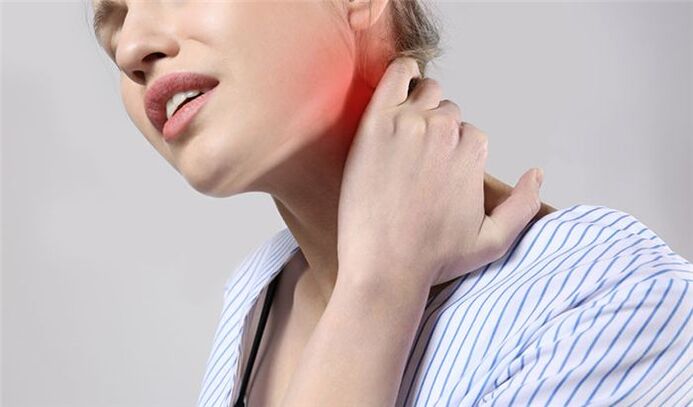
What features of the cervical spine cause osteochondrosis symptoms?
- There are openings in the lateral processes of the vertebrae - the carotid arteries pass through them to the right and left, which supply blood to the brain.
- In the cervical region passes the initial part of the spinal cord: it contains fibers that carry nerve impulses to all parts of the body, provide movement, sensitivity. If there is a compression of the spinal cord in the neck, neurological disorders occur throughout the body.
- This section of the spine has great mobility, and this predisposes to the occurrence of osteochondrosis (although, in most cases, the disease still develops in the lumbar region - it not only has high mobility, but also undergoes the greatest load).
- In the neck, nerve roots emerge from the intervertebral foramina, forming the cervical and brachial nerve plexuses. They are responsible for the movements of the muscles of the neck, arms, shoulder girdle, skin sensitivity, regulation of autonomic functions.
- The first vertebra does not have a massive front - the body - it is a bony ring that is put on the tooth - a bone growth on the second vertebra. This allows the head to turn from side to side.
Neck pain, headache, feeling of weakness, numbness in the hands are symptoms that should make you see a neurologist. Examination by a specialist and examination with modern equipment will help to understand the causes of the pathology and take the most effective measures.
Stages and symptoms of cervical osteochondrosis
The first target of the disease is the intervertebral discs. Each disc consists of a pulpy nucleus enclosed in a dense fibrous ring. The nucleus acts as a shock absorber during loads on the spinal column and the fibrous ring keeps the nucleus pulposus inside the spinal column.
Under conditions of poor blood circulation and nutrition, the disc tissues begin to break down. The fibrous ring loosens and the core loses some of its moisture, becomes thinner and partially loses its shock absorbing properties. As a result of these changes, the intervertebral disc's ability to carry loads is reduced and damaged.
One of the main symptoms of osteochondrosis of the cervical spine is neck pain of a shooting, burning, stabbing nature, similar to "electric shocks". It usually extends to one or both hands.
Some patients complain of aching or constant pain and, in addition to pain, stiffness of movement, dizziness, headache and memory impairment.

In many ways, the nature and severity of the pain, as well as its associated symptoms, depend on the stage of osteochondrosis:
- 1 stage.Changes occur inside the intervertebral disc: the nucleus pulposus moves and begins to irritate the nerve endings. But pain in the initial stage usually occurs only during physical exertion, movement, coughing and sneezing, and at rest a person may not experience any discomfort.
- 2 stages.The fibrous ring loses its ability to hold the nucleus pulposus, the distance between the vertebrae decreases, and they move relative to each other. As a result of such changes, pinching of nerve endings is possible, which causes severe pain. Pain, in turn, forces a person to take a forced position.
- 3 stages.The fibrous ring is destroyed and an intervertebral hernia occurs. At this stage, the cervical spine is often deformed: its natural curvature decreases. A hernial bulge compresses or irritates the nerve roots, causing intense and constant pain in the neck and arms, often accompanied by numbness and muscle weakness.
- 4 stages.The fibrous ring becomes dense and adhesions form between the vertebrae. As a result, immobility occurs in the affected area, while pain can also subside.
Diagnostics
With complaints of poor health in osteochondrosis of the cervical spine, you should contact a neurologist. During the examination, the doctor determines the origin of the pain. To do this, use the following methods:
- presses with his fingers on the region of the cervical vertebrae in the places where the nerve roots protrude - the emerging pain reaction indicates headache;
- presses on the points next to the bony protuberances under the lower edges of the ears: a painful attack after this clearly signals the development of a cervical migraine as a result of mechanical compression.
For an accurate diagnosis of cervical osteochondrosis, a number of instrumental studies are prescribed. Radiography, MRI and computed tomography remain the main ones. With their help, pathological changes that have occurred in the structure of the bone, cartilage and soft tissues are visualized.
Treatment of cervical osteochondrosis
Drugs are designed to eliminate symptoms, restore normal blood circulation, biomechanics of the entire cervical region.
To relieve pain, NSAIDs, analgesics, muscle relaxants and antispasmodics are used.
Vasodilators: Vasodilators help reduce vegetative manifestations, improve venous outflow and prevent edema in the affected area.
Means containing vitamins of group B and magnesium help improve the nutrition of nerve tissue cells and reduce adverse symptoms.
At the same time, patients are recommended drugs to regulate blood pressure, correct the heart rhythm.
Many patients are shown tranquilizers, antidepressants, sedatives.
Depending on the severity of the condition, the course of treatment is short or long. Pain relievers are used only once or for several days. Means that normalize blood flow and vitamins - 2-3 month courses.
To maintain the action of drugs, physiotherapy is prescribed:
- massage of the collar area;
- acupuncture and reflexology.
With exacerbations, the use of therapeutic bandages that support the cervical muscles is shown.
In the absence of an exacerbation of osteochondrosis, therapeutic exercises help stop and prevent the symptoms of VVD. Gymnastics helps strengthen the neck muscles, relieves spasms, improves the elasticity of blood vessels and the ligament apparatus of the vertebral joints. The training includes movements for stretching soft tissues: deep tilts of the head, turns, rotations.
Patients with osteochondrosis complicated by VVD should carefully arrange a bed. You need to rest only on an orthopedic mattress and pillow, do not drink a lot of fluids during the night to avoid swelling. It is necessary to avoid work and hobbies associated with an unfavorable position of the cervical vertebrae: tilt back or low tilt of the head.
All materials presented on the site are for educational purposes only and are not intended for medical advice, diagnosis or treatment. The administration of the site, the publishers and authors of the articles are not responsible for any consequences and losses that may arise from the use of the materials of the site.
Vertigo with cervical osteochondrosis
Vertigo with cervical chondrosis is a common occurrence in both sexes, starting from the age of 30 and beyond. The specificity of the lifestyle and some abuse lead to the development of osteochondrosis of the cervical spine in adulthood in almost every second inhabitant of our country. There are patients who have problems already in adolescence.
It is impossible to underestimate the danger of this pathology: it worsens a person's well-being, contributes to the development of dangerous conditions. The symptoms of which are a variety of unpleasant sensations.
Causes of dizziness in cervical osteochondrosis
In the article we will consider whether he can be dazed and sick for a long time with cervical osteochondrosis, why this happens, due to what the condition worsens and what to do, how to get rid of the discomfort forever.
Due to an unhealthy lifestyle and regular overloads of the neck area, the condition of the spine in this area is gradually changing.
Degenerative changes develop in the intervertebral discs, the holes through which the spinal nerves and vessels that feed the brain gradually narrow.

The condition is extremely unpleasant and dangerous. The patient feels pain with sudden movements, in certain positions of the head and neck. The brain receives less oxygen than it needs, which causes regular bouts of dizziness to develop.
The main reasons why a person with osteochondrosis may feel dizzy:
- Compression of the vertebral artery by bone growths. Osteophytes pinch the vessel that supplies the cerebellum and the basal parts of the brain. Its permeability decreases, it reduces the amount of blood and oxygen that pass through it. In medicine, this phenomenon is called vertebral artery syndrome.
- Frank's nerve irritation. The nerve fibers of the sympathetic system envelop the vertebral artery, feel any impact on it. In response to irritation, the nerve causes the vessel to spasm, compromising its patency. Hernias, formed osteophytes or instability of the cervical vertebrae can cause discomfort.
- Subluxation of the upper articular process of the underlying vertebra or formation of a herniated disc in the neck area.
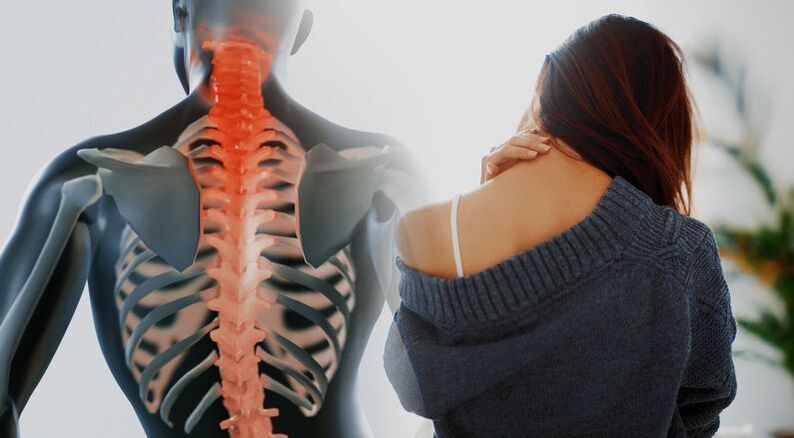
With dizziness and nausea due to osteochondrosis of the cervical spine, as well as the manifestation of other symptoms, such as weakness in women, treatment with drugs is necessary, but what to take, which pills will help, only the doctor will decide after a thorough study of the condition of the patient. After all, the causes of dizziness are very different.
Depending on the specific cause of the development of the pathological condition and negative symptoms, various means and techniques are used.
You must understand that dizziness, if the attacks intensify and become frequent, is a very dangerous condition. A person not only puts his or her life at risk by driving or crossing the road, but also carries the risk of developing encephalopathy due to a regular lack of blood and nutrition for neurons.
Additional symptoms
Before deciding what will help with the appearance of dizziness in cervical osteochondrosis, what exercises will stop unpleasant attacks, you should not read the reviews of strangers, but evaluate the accompanying symptoms that occur during the development of the disease.
An experienced doctor, according to such signs, suggests the degree of development of chondrosis. She is also able to assess the danger of the condition by filling out a diagnostic algorithm. And then - to choose an effective and safe treatment.
Symptoms accompanying a decrease in the patency of the cervical artery and signal the need to urgently consult a doctor:
- Intermittent, possibly pulsatile tinnitus. Then it gradually spreads to the whole head. As a rule, an attack occurs after being in an uncomfortable position, physical exertion or against the background of severe fatigue.
- Cracking, pain when moving the neck.
- Darkening of the eyes, brief fainting when the head is thrown back. In advanced cases, even a sharp turn causes such a reaction.
- Nausea, up to vomiting, accompanied by attacks of dizziness.
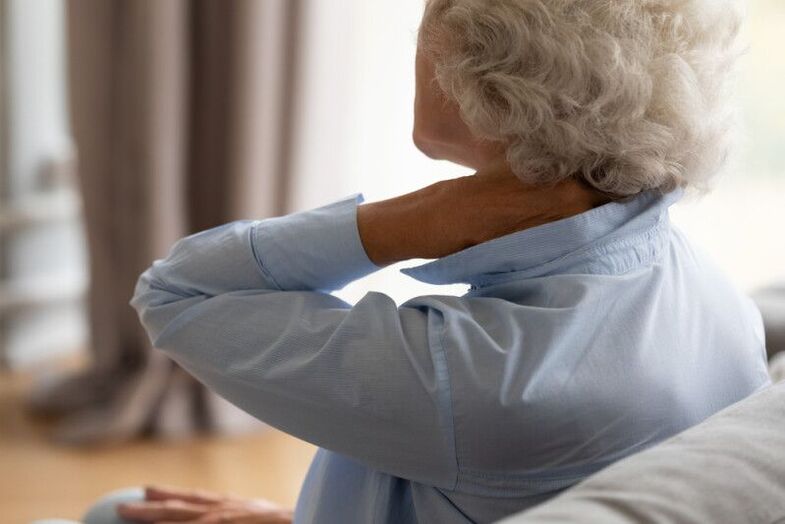
The head can turn not from cervical chondrosis, why it developed and what to do, only a neurologist will tell you after the examination. The earlier the diagnosis is made and treatment is started, the more effective the measures taken will be.
If you seek help in advance, there is a chance to avoid drug therapy and get rid of the problem that has arisen. By delaying the trip to the doctor, there is a risk of provoking the development of a more dangerous condition.
Diagnostics
How to treat osteochondrosis of the cervical spine with dizziness, what to do if a violation of coordination of movements has developed and what is prescribed in such cases, you can understand this after going through a comprehensive diagnosis, since each case is unique.
Before deciding on a treatment regimen, it is extremely important for the doctor to find out what influenced the development of the disease. It is necessary to clarify how quickly it worsens and what are the features of its course. Due to these characteristics, when it comes to regular vertigo disorders, a thorough diagnosis is performed.
A neurologist carries out an initial examination, during which:
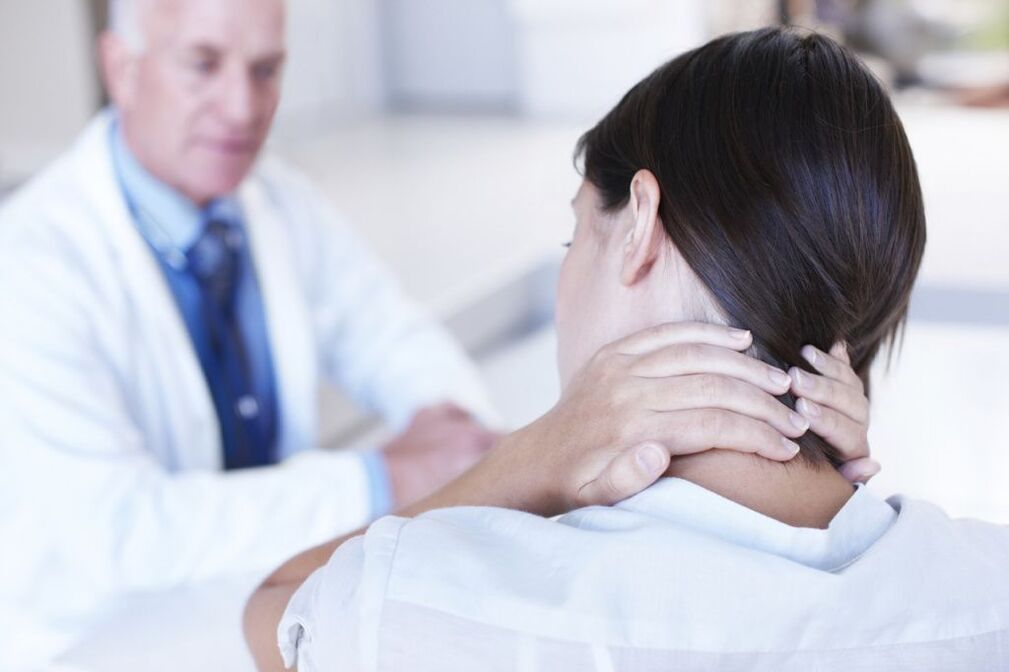
- determines the range of symptoms accompanying the course of the disease;
- according to the results of a physical examination, find the features of changes in the cervical region;
- collects an anamnesis, a history of the development of the disease;
- inquires about the characteristics of the patient's life in order to identify the risk factors that influence the development of the disease.
Subsequently the instrumental exams will be scheduled:
- MRI of the brain and neck to determine if the changes have already appeared and how extensive they are;
- Ultrasound of the vessels passing through the neck will show how much blood flow patency and brain nutrition are reduced;
- CT of the cervical spine reveals deviations formed by the norm of bone structures;
- electromyography will allow to record the electrical activity of the muscles of the area evaluated;
The correct answer to the question of what to do if the head is spinning from the neck and it hurts is to go to the doctor. The clinic will accurately determine the causes of the poor condition and select the appropriate therapy.
Treatment
Having determined the specific stage of the disease, the doctor prescribes individual therapy. After all, you can meet such a phenomenon as neuralgia of the occipital nerve, and you need to treat it in your own way.
Preference is given to complex treatment, which includes:
- taking medications (chondroprotectors, anti-inflammatory drugs, etc. );
- physiotherapy techniques;
- various massage techniques;
- specialized complexes of exercises in physiotherapy, physical therapy;
- following a healthy diet.
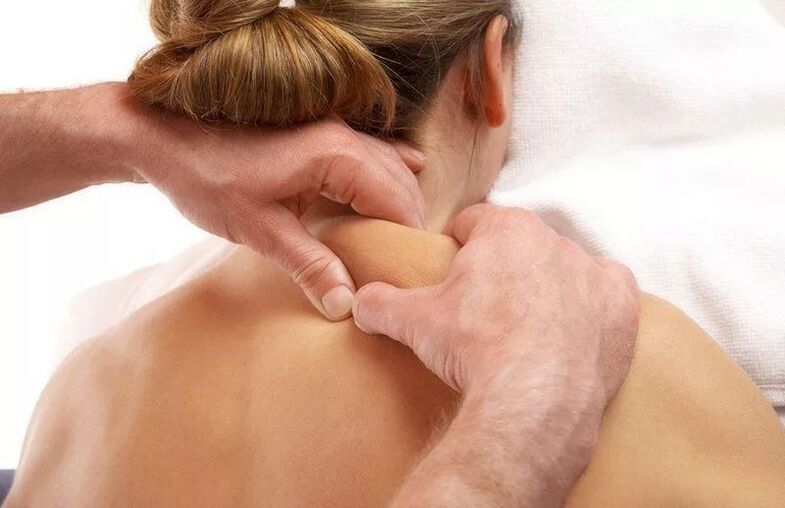
When dizziness occurs with osteochondrosis of the cervical region, treatment can be carried out both by conservative methods and by surgical intervention.
Operations are performed in situations where the spine is too narrow or persistent hernias have formed.
Effective methods of treatment in the early stages are massage and special sets of exercises. Compliance with the recommendations of the doctor at the preclinical stage of the development of the disease allows you to completely cure it.
The results show physiotherapy methods that allow you to get rid of painful symptoms in just a few sessions:
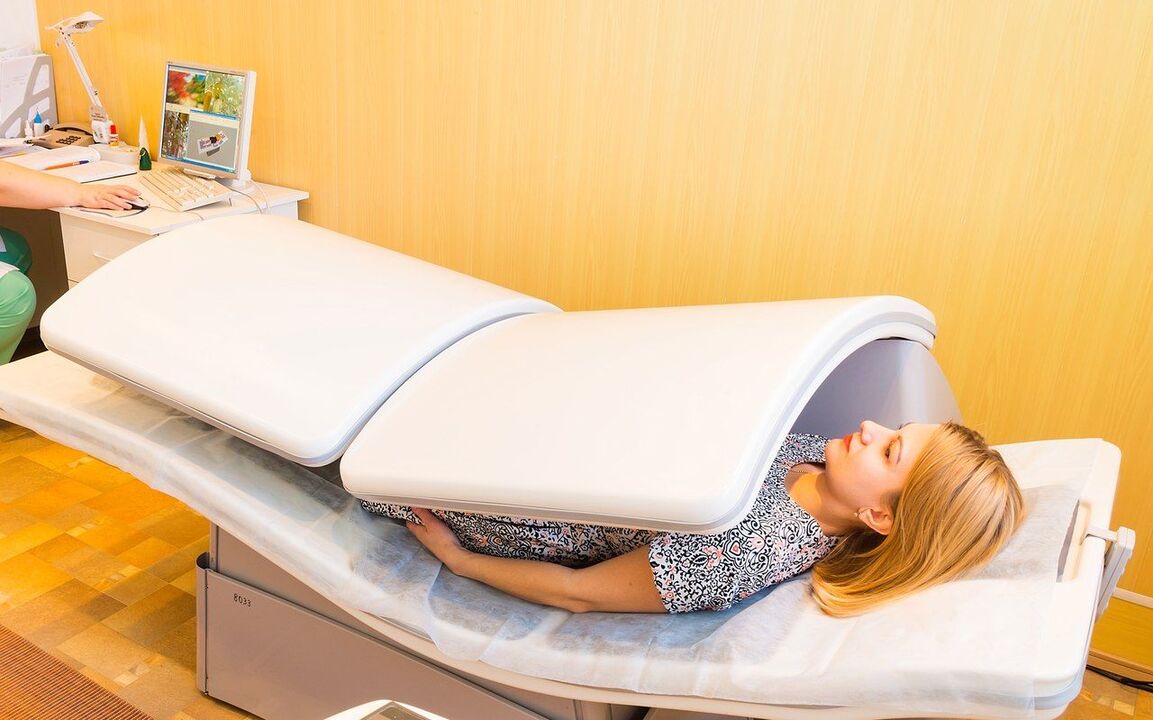
- classical manual therapy;
- methods of influence of shock waves on the body;
- hydromassage;
- laser therapy.
Treatment of cervical osteochondrosis, when the head is already regularly numb, is an urgent step needed.
This dangerous symptom is an indicator of the development of really dangerous pathologies that can further worsen the comfort of human life. And also reduce its duration.
Prevention
It is possible to prevent the occurrence of unpleasant symptoms or significantly reduce their severity with the help of regular preventive actions. Many people think whether it can be effective to use painless funds for dizziness due to cervical osteochondrosis, how to get rid of it, quickly relieve an attack, rather than treat the condition at home?
Lifestyle prevention
We list the suitable measures to prevent the progression of the disease:
- Decrease in time spent in a flexed position. For example, at the computer, gadgets, or work that requires neck tension and a forward tilted head position. Provide an ergonomic workplace.
- Organization of a savings regime of alternation of work and rest.
- Denial of habits, destructive addictions. It is necessary to reduce alcohol consumption and the number of cigarettes smoked.
- Set up a place to sleep. Get an orthopedic pillow and mattress that take into account the structural characteristics of your spine.
- Increase the time for physical activity in your daily schedule, avoid physical inactivity.
- Perform special warm-up regularly during the working day. Ideally, you should devote 5 minutes every hour to exercising.
- Avoid traumatic activities, extreme sports and excessive physical exertion.
- Watch your body weight. When obesity appears, try to lose excess weight as soon as possible.
- Regularly take specialized massage courses, learn safe self-massage techniques.
- Use comfortable backpacks to carry things, avoid bags that cause bias when walking. Use the head restraints when traveling seated.
- In the event of an injury, seek help immediately. Start following medical recommendations from the first days.


It is impossible to ignore the situations when, against the background of preventive measures, the neck and back of the head hurt. This is the first symptom of the disease and requires treatment.
Power protection
It is helpful to follow a special diet that will support drug-induced recovery processes in the neck and cervical spine.
Key principles of nutrition in the presence of such a problem or predisposition to it:
- the use of gelling foods in food, which contribute to the restoration of cartilage in the body;
- maintaining a balance between protein foods and carbohydrates, a sufficient amount of lean meat and fish in the diet;
- limit excessive consumption of salt and spices;
- reduction in the consumption of pickled and smoked products;
- reduction of the diet of sweets, including rich products;
- limit caffeinated drinks;
- increase the share of fresh fruit and vegetables in the daily menu;
- refusal of fatty and fried foods, fast food.
An important place in the life of a person with a similar disease should be occupied by physical therapy. They are particularly relevant for the elderly or who lead a sedentary lifestyle. At the same time, a special set of exercises must be repeated every day to achieve the expected result.
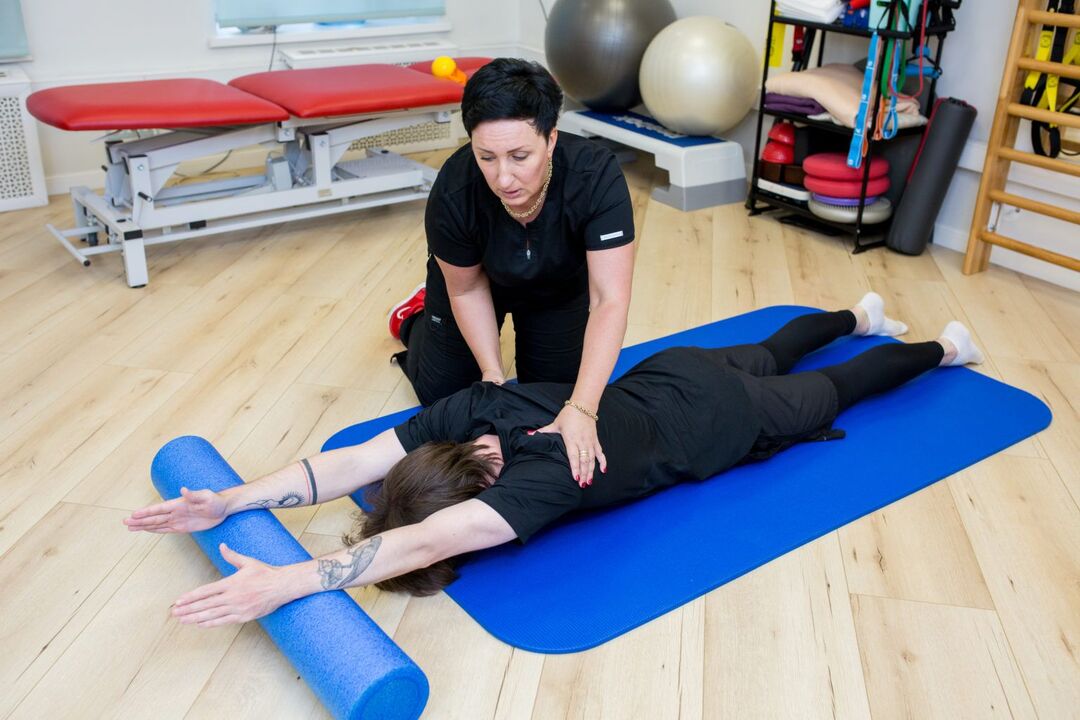
Despite the variety of traditional medicine, with dizziness due to cervical osteochondrosis, what to do, what to drink, how to cope with the attacks, how to cure a deviation or eliminate a specific symptom, this or that remedy really helps, and does cause additional damage , should be decided by a medical professional. An online consultation with a neurologist can help here.
Do not blindly follow the advice of friends and try to get rid of the disease without enlisting the recommendations of a qualified doctor.
In advanced cases, osteochondrosis can not only reduce the quality of life, but also deprive a person of his ability to work. Therefore, try to notice in time the factors that can lead to the destruction of the intervertebral discs and, if possible, eliminate or reduce their harmful effects on the spine. If you are concerned about neck pain, be sure to see your doctor. Only a specialist can determine the stage of the disease, select painkillers and prescribe a course of physiotherapy or physiotherapy exercises.


























